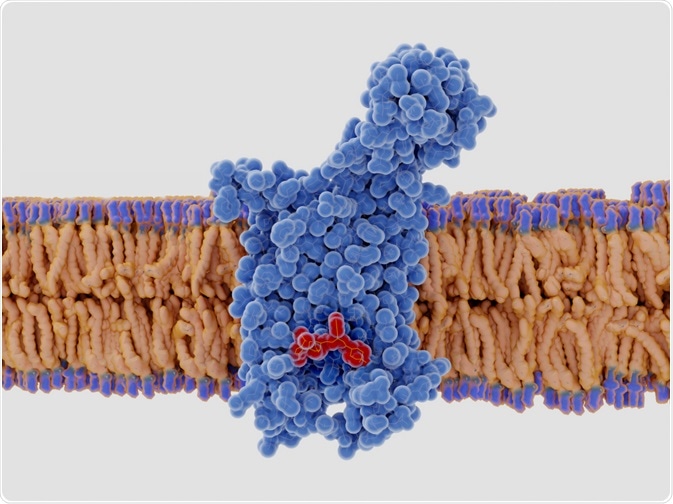Chemokines are small cell signaling molecules involved in the recruitment of immune cells to fight against invading, infective microbes such as bacteria and viruses. These small molecules are secreted by cells and go on to promote the movement of immune cells towards sites where they are required in the body.

Image Credit: Juan Gaertner / Shutterstock.com
What are chemokines?
A chemokine is a type of cytokine, which is a protein secreted in the short term to regulate nearby cells. Chemokines can be described more specifically as chemotactic cytokines because they induce directed chemotaxis of certain cells that are in close proximity. Chemotaxis is the movement of cells in response to chemical signals.
Cells that respond in this way to chemokines move along a gradient of increasing chemokine concentration, meaning that the cells migrate towards areas where the chemokine level is relatively high. Chemokines released at inflammatory sites attract immune cells to those areas in order to aid the immune response.
Functions
Chemokine function is enabled by a family of G protein-coupled receptors. Chemokines are grouped into the subfamilies CXC, CX3C, C, and CC, with the ligands denoted by “L” and the receptors by “R”. For example, interleukin 8 (IL-8) is called CXCL8, while its receptors are called CXCR22 and CXCR1.
Forty-seven chemokines and 19 chemokine receptors have been identified to date, which allows for a high degree of binding specificity. The molecules presented on a cell dictate which tissue it will migrate towards. A cell that expresses CR7, for example, will migrate to a site where the ligands CCL19 and CCL21 are expressed.
Structural characteristics
Chemokines range in size from 6 to 14 kilodaltons (kD). Most chemokines share a 20% to 50% similarity in their structure, meaning that they share homologous genetic and amino acids sequences. Chemokines also have conserved amino acids that provide their 3-dimensional shape.
The most common chemokine structure is the characteristic Greek key shape, which is formed by the interaction of two pairs of cysteines, with an intramolecular disulfide bond joining the first and third cysteines and the second and fourth cysteines.
The number of cysteine residues is determined in order of their appearance in the protein sequence of the chemokine. A loop of around ten amino acids follows after the first two cysteine residues and is called the N-loop. A single-turn helix called a 310-helix follows the N-loop, as well as three β-strands and a C-terminal α-helix. These are all connected by turns called the 30s, 40s, and 50s loops. The third and fourth cysteine residues lie in the 30s and 50s loops.
Chemokines are grouped according to their amino acid composition and where the first two cysteine residues are located. The CC and CXC chemokines are the two largest subfamilies, with CXC found on chromosome 4 and CC found on chromosome 17.
In the CXC subfamily, an amino acid separates the first two cysteine residues, whereas in the CC subfamily, the cysteines are adjacent. The CX3C chemokines contain three amino acids that separate the two cysteines and the C chemokines have just one cysteine in the N terminus.
References